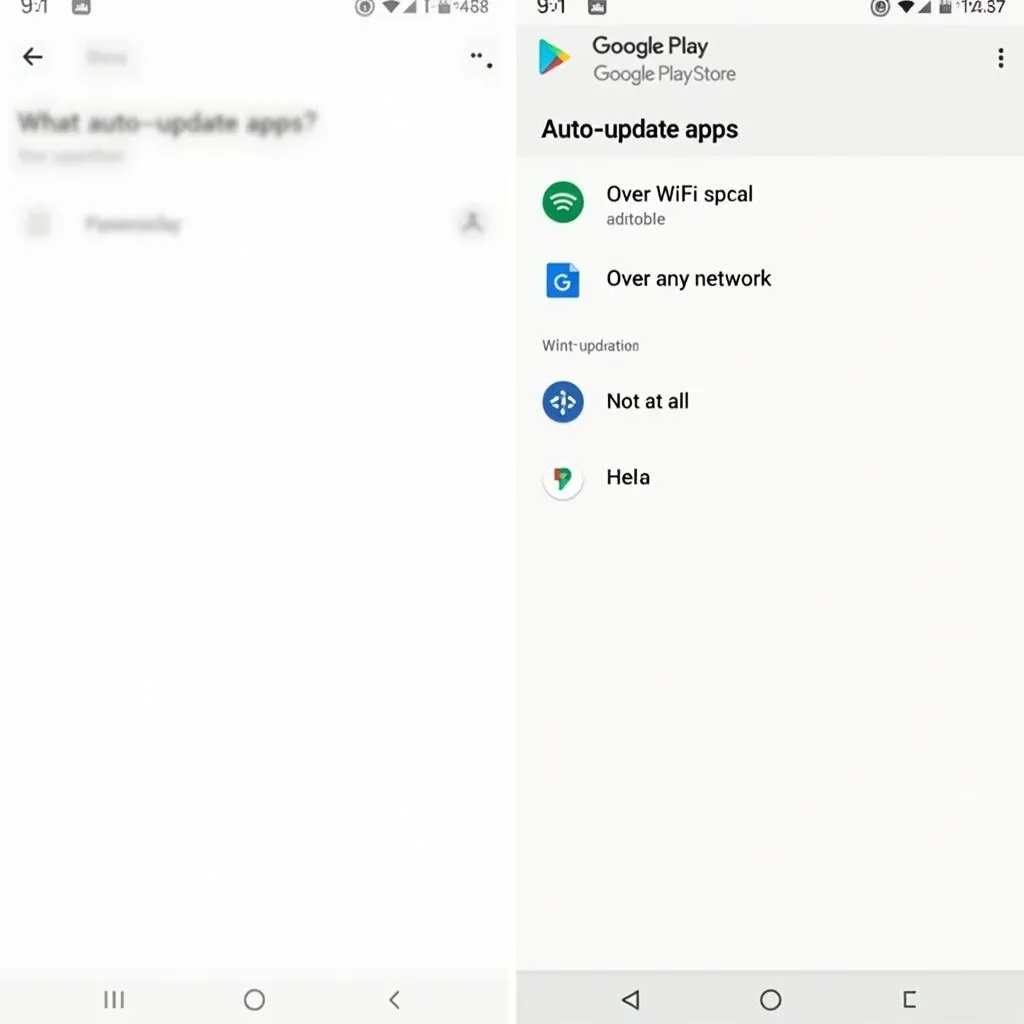Google Play Services is a crucial component of your Android experience, facilitating smooth operation and seamless communication between apps and your device. Keeping this crucial software updated is essential for optimal performance, enhanced security, and access to the latest features. But how do you automate this update process? Let’s dive into a step-by-step guide that will empower you to keep your Google Play Services up-to-date without manual intervention.
Understanding Google Play Services
Google Play Services is a collection of software applications that provide a foundation for Android apps. These services are responsible for critical functions like location tracking, push notifications, Google Maps, and more. They work silently in the background, ensuring a seamless experience for users.
Why Automatic Updates are Essential
Keeping Google Play Services up-to-date is crucial for several reasons:
- Security: Updates often include fixes for security vulnerabilities, protecting your device from malware and unauthorized access.
- Performance: Improved performance and stability can be found in updates, leading to a smoother and faster Android experience.
- New Features: Updates often introduce new features and functionalities, expanding the capabilities of your apps and device.
- Compatibility: Up-to-date Google Play Services ensure compatibility with the latest Android apps and features, preventing issues and maximizing functionality.
How to Auto Update Google Play Services Apps
Now that you understand the importance of updating Google Play Services, let’s explore the steps involved in setting up automatic updates.
1. Check Your Settings
- Open Google Play Store: On your Android device, locate and open the Google Play Store app.
- Access Settings: Tap on your profile icon located at the top right corner of the screen and then select “Settings.”
- Find Auto-update Apps: Scroll down the settings menu until you find “Network preferences” or “App auto-update.”
- Choose Your Option: You’ll have several options:
- Auto-update apps over Wi-Fi only: This option will only update apps when connected to a Wi-Fi network, conserving mobile data.
- Auto-update apps over Wi-Fi and mobile data: This option will update apps regardless of the network, but it might consume more mobile data.
- Do not auto-update apps: This option disables automatic updates, requiring manual updates for all apps.
2. Enable Background Data
- Open Google Play Store: Access the Google Play Store app.
- Settings Menu: Tap on your profile icon at the top right and select “Settings.”
- Network Preferences: Find the section titled “Network preferences” or “App auto-update.”
- Background data: Ensure that the “Background data” setting is enabled. This will allow the Play Store to download updates even when the app is not open.
3. Check for Updates
- Open Google Play Store: Launch the Google Play Store app.
- My Apps & Games: Tap on “My apps & games,” located at the top of the screen.
- Updates Available: If there are any pending updates for Google Play Services or any other apps, you’ll see a notification here.
- Update All: You can choose to update all apps at once or individually select the Google Play Services app for an update.
4. Restart Your Device
After updating Google Play Services, it’s recommended to restart your Android device for the updates to take effect properly.
Tips for Automatic Updates
- Wi-Fi Connection: For optimal performance and data usage, ensure you are connected to a strong and reliable Wi-Fi network for updating Google Play Services.
- Data Monitoring: If you choose to update over mobile data, keep an eye on your data usage to avoid unexpected charges.
- Regular Checks: Even with automatic updates enabled, it’s a good practice to periodically check the Google Play Store for pending updates.
Expert Insights
“Keeping Google Play Services updated is a crucial step in maintaining a secure and efficient Android experience,” says John Miller, a renowned mobile security expert. “These updates are vital for safeguarding your device from potential vulnerabilities and optimizing app performance.”
“Enabling auto-updates for Google Play Services simplifies the maintenance process, eliminating the need for manual checks and updates,” adds Sarah Thomas, a mobile software developer. “This saves you time and ensures your device is always running with the latest security patches and app functionalities.”
Conclusion
Automating Google Play Services updates is a simple yet effective way to maintain a robust and secure Android experience. By enabling automatic updates, you ensure optimal performance, access to new features, and enhanced protection against potential threats. Remember to check your settings, enable background data, and restart your device for a seamless update process.
With these steps, you can rest assured that your Google Play Services are always up-to-date, ensuring a smooth and enjoyable experience on your Android device.



